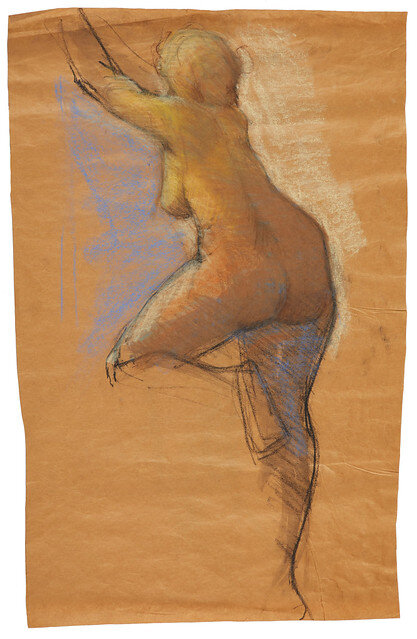Kerry James Marshall (b. 1955) has earned recognition worldwide through his artistic practice that depicts the life, history, and culture of African Americans. Marshall’s work is rooted in his experiences of growing up during the Civil Rights Movement, and for over thirty years the artist has created artwork that explores the historical artistic representation of African Americans through a wide range of techniques and styles.
In a 2017 NPR interview, (available here) Marshall explained the power behind his work and the emotions it can stir:
"What you're trying to create is a certain kind of an indispensable presence," Marshall says. "Where your position in the narrative is not contingent on whether somebody likes you, or somebody knows you, or somebody's a friend, or somebody's being generous to you. But you want a presence in the narrative that's not negotiable, that's undeniable."
Kerry James Marshall’s painting Mastry, photo courtesy of the Metropolitan Museum of Art.
This year, we are proud to feature a series of Kerry James Marshall’s figure drawings from college, demonstrating his early interest and talent in drawing the human form. An article from FRONT Triennial: Cleveland Triennial of Contemporary Art speaks to Marshall’s skill:
“Marshall’s deep and wide-ranging knowledge of art history is evident in his work across a variety of media. His drawings in particular reveal his reliance on techniques associated with Old Master traditions, even as his art questions many of the ideals that those traditions support.
A series of close-up studies of hands directly relates to the long tradition of anatomical studies through which artists since the Renaissance have attempted to develop a lifelike depiction of the human figure and to refine certain gestures and poses.”
Though the human figure has been the subject of art since prehistoric times, it wasn’t until the medieval period that the use of live nude models was common. Now, figure drawing is a staple of studio instruction and an integral part of academic art training. Marshall’s early figures, anatomical and graceful, hint at the powerful work yet to come and the importance of both art history and the human form in his practice.
The works were brought to us with minor age – related issues. The drawings were selectively surface cleaned to reduce surface grime. The tears and losses were repaired using Japanese tissue and wheat paste, before the drawings were humidified and flattened.
Installing the works at our booth at EXPO.
Before treatment
After treatment





